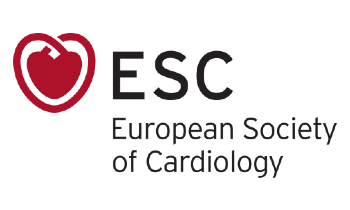2015 ESC/ERS Guidelines for the Diagnosis and Treatment of Pulmonary Hypertension
The Joint Task Force for the Diagnosis and Treatment of Pulmonary Hypertension of the ESC and the ERS
Published 1 January 2016
Nazzareno Galiè, Marc Humbert, Jean-Luc Vachiery, Simon Gibbs, Irene Lang, Adam Torbicki, Gérald Simonneau, Andrew Peacock, Anton Vonk Noordegraaf, Maurice Beghetti, Ardeschir Ghofrani, Miguel Angel Gomez Sanchez, Georg Hansmann, Walter Klepetko, Patrizio Lancellotti, Marco Matucci, Theresa McDonagh, Luc A. Pierard, Pedro T. Trindade, Maurizio Zompatori, Marius Hoeper, ESC Scientific Document Group
Eur Heart J. 2016 Jan 1;37(1):67-119

 Pulmonary
hypertension (PH) is a pathophysiological disorder that may involve multiple clinical conditions and can complicate the majority of cardiovascular and respiratory diseases. This guideline, developed by a task force representing the multidisciplinary
nature of PH, was preceded by two pervious guidelines, published in 2004 and 2009. The main changes and adaptations as compared with the 2009 ESC and ERS PH guidelines are:
Pulmonary
hypertension (PH) is a pathophysiological disorder that may involve multiple clinical conditions and can complicate the majority of cardiovascular and respiratory diseases. This guideline, developed by a task force representing the multidisciplinary
nature of PH, was preceded by two pervious guidelines, published in 2004 and 2009. The main changes and adaptations as compared with the 2009 ESC and ERS PH guidelines are:
The table of contents structure has been simplified, with three initial general chapters including classifications, basic aspects and differential diagnosis, two chapters for pulmonary arterial hypertension (PAH) and one chapter each for PH due to left heart disease (LHD), lung disease and/or hypoxia, chronic thromboembolic pulmonary hypertension (CTEPH) and unclear and/or multifactorial mechanisms.
New wordings and parameters for the haemodynamic definition of post-capillary PH subgroups have been adopted. Pulmonary vascular resistance (PVR) has been included in the haemodynamic definition of PAH.
An updated common clinical classification for adult and paediatric patients is reported.
New advances in pathology, pathobiology, genetics, epidemiology and risk factors are reported.
An updated diagnostic algorithm has been provided in an independent chapter and novel screening strategies are proposed in the web addenda.
The importance of expert referral centres in the management of PH patients has been highlighted in both the diagnostic and treatment algorithms.
New developments on PAH severity evaluation and on treatments and treatment goals are reported, including combination therapy and two new recently approved drugs. The treatment algorithm has been updated accordingly.
The chapters on PH due to LHD and lung diseases have been updated. The term ‘out of proportion PH’ has been abandoned in both conditions.
New diagnostic and treatment algorithms are reported in the CTEPH chapter, including general criteria for operability and balloon pulmonary angioplasty (BPA) and a newly approved drug.
A short chapter on PH due to unclear and/or multifactorial mechanisms has been added.
This document was endorsed by ISHLT in 2015.
Read at EHJRelated Guidlines
-
Report from a Consensus Conference on Primary Graft Dysfunction after Cardiac Transplantation
-
Revision of the 1990 Working Formulation for the Standardization of Nomenclature in the Diagnosis of Heart Rejection
-
EPPVDN Expert Consensus Statement on the Diagnosis and Treatment of Paediatric Pulmonary Hypertension
-
2019 Updated Consensus Statement on the Diagnosis and Treatment of Pediatric Pulmonary Hypertension
-
HFSA/SAEM/ISHLT Clinical Expert Consensus Document on the Emergency Management of Patients with Ventricular Assist Devices

